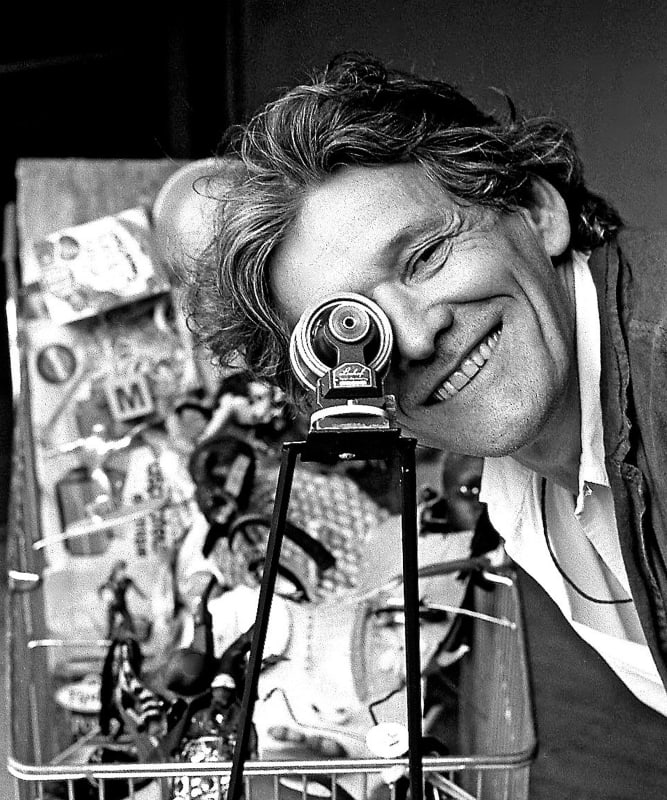Bernard Pras was born on March 22, 1952 in Roumazieres, Charente. He was the eldest of three children. When his mother was expecting her third child, his brother Gerard she was unable to deal with both her job and her role as a mother. Bernard was sent to live with his grandparents who lived in the country in Roussines. His grandmother, who worked for an upper-class household adopted some of their cultural codes, like hanging paintings on the wall.
The peculiar atmosphere of the grocery and its bric-a-brac left a lasting and vivid impression on Bernard, who began to develop a special sensitivity to objects.
In 1959 the family settled back together in Jarnac. Bernard attends school in Jarnac, where he is confronted with great difficulty as he suffers from dyslexia. He fails in the middle-school exam.
His teens are yet a happy time. Life in Jarnac is determined by his father's job as a cyclist and weekends are spent along the road waiting for the cyclists. Bernard often gets bored and deeply feels the weight of time. He grows up in a peculiar atmosphere, somewhat neglected by his father, who focuses on his strict daily practice, cared for by his mother, who also supports her husband. Thus, he learns some essential notions, particularly persistency, making his life as an artist.
When he is 14 he starts to paint, which probably allows him to express himself as he is confronted by his academic failure. He begins by reproducing landscapes that he finds in books about American painting and then paints still lifes from real life. From then on he never stops painting. After failing in the middle school exam, his parents send him to technical school which he puts up with only 6 months. A battle with his parents then ensues to let him enrol in art school, which he finally succeeds to do thanks to his mothers support.
Bernard starts the School of Art in Poitiers, there he feels an unprecedented sense of freedom and regeneration. For his second year, he opts for the School of Art of Toulouse where he attends Daniel Schenton's painting course.
He is to be a good student at last. He both parties and works a lot. He already has a weird tendency to surround himself with an a quantity of junk and objects. He graduates in painting by presenting a series of psychological portraits. In 1974 Bernard is awarded the Toulouse Painting Prize dedicated that year to the theme of the fishmonger.
On graduation Pras begins work as an assistant art teacher. He works as a teacher for three years all the time continuing to paint. He works in printing and engraving . Bernard's work continues to evolve using wood pulp and he produces a series of portraits. He moves forward to polychrome wooden sculptures. He uses his aquagravure technique and wood pulp to invent new material. In 1994, Bernard makes paintings resulting in collages from torn paper. One day he takes over three bags of old toys that a friend of his was about to throw away and starts creating anthropomorphic sculptures using only the toys in the same manner as his paper collages. Bernard's plastic sculptures are exhibited in 1995 at the Centre Marius Sidobre, Arcueil, and later at the second Marche d'Art de Siant Cloud. The way people react in front of his works, children take the artistic works for toys and want to play with them, and the puplic in general confronted with the simplicity of the material, tend to take them for mock ups. This is how Bernard had the idea of producing a background for the models and producing them in photographic form. After various exhibitions which proved a great success Pras has continued to work in this format with successful exhibitions in various European galleries.

